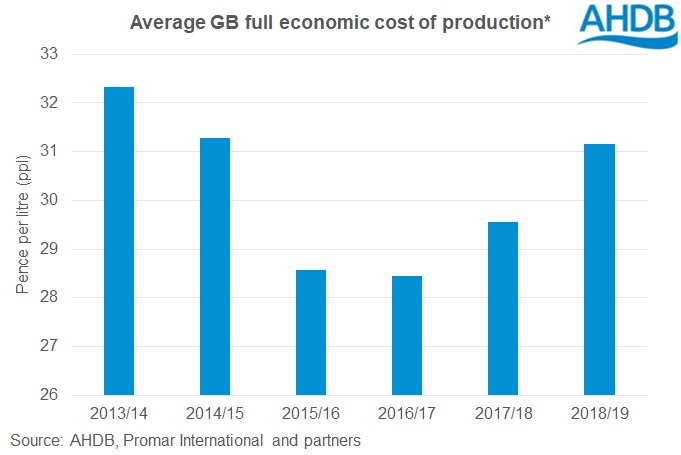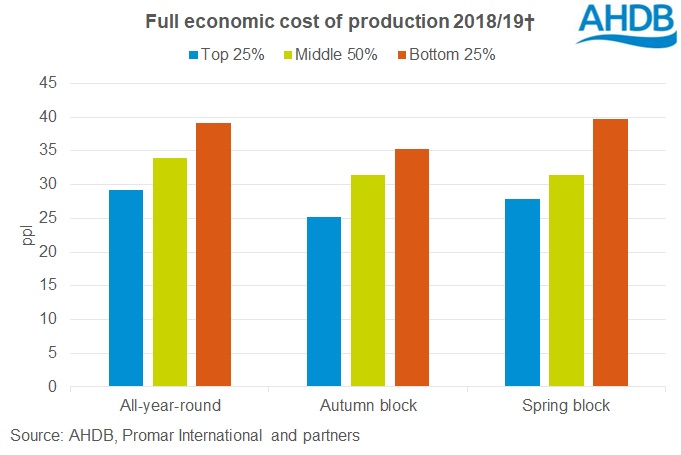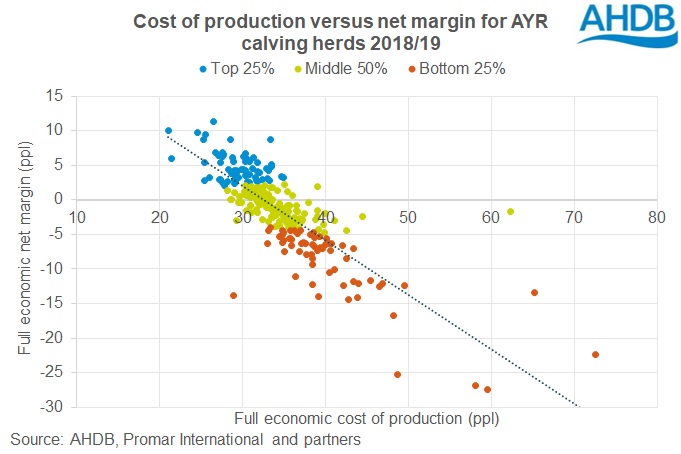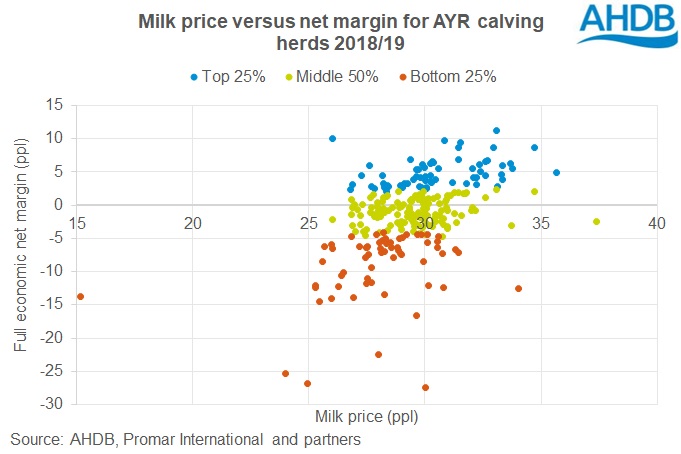Challenging your costs in challenging times
Wednesday, 17 June 2020
By Kate Parkes
Testing times
Many businesses will be looking critically at their costs right now, to try to limit the damage caused by the coronavirus outbreak. Dairy is no exception, especially as the recent market volatility has followed a couple of years of rising costs – 2018/19 farm accounts (the most recent available to us) showed the highest cost of production since 2014/15. Although more recent estimates suggest inputs have fallen by around 1ppl since April 2019, this still leaves costs at a relatively high level, particularly when compared with current milk prices.

*Excluding youngstock
Top performers limit the damage
Costs vary a lot between the top and bottom performing farms across each calving system. The herds have been ranked by the value of their outputs in relation to the cost of their inputs, which is a measure of their productivity. The top 25% consistently have lower costs, whether all-year-round (AYR) or block calving. The spring block calvers’ costs were higher than usual in 2018/19, due to the dry weather during that year, but the same gap remained between top and bottom farms.

The variation in costs is reflected in net margins, because costs are a strong driver of net margin. The top 25% across all calving systems made a positive net margin during 2018/19.

† Including youngstock
Low costs pay
Farms with the lowest production costs have the highest net margins – the first chart below shows this with cost versus net margin for 258 AYR calving herds. If we look at milk price versus margin for the same farms, on the second chart below, the association between milk price and margin is not as strong – the top performing farms don’t always have the highest milk prices. Milk prices have dropped since this data was collected, so margins will be lower, but it shows the farms with the lowest costs stand the best chance of making a profit.


Finding efficiencies
Cost efficiency often isn’t an easy or popular subject, particularly when facing other difficulties in the farm business. But it’s worth persevering with, as it can make a big difference to your net margin and make your business more resilient to future milk price shocks, if you stick with the savings you put in place.
We have some resources that can help you compare your herd with figures from the most productive and profitable British dairy herds – to find out where you might be able to manage costs better and gain more control over your net margin:
- Review your costs using our Trimming costs page
- Know your production cost and how it compares against excellent, good and average performance, using our Key Performance Indicator calculator
- Look more closely for areas to improve by comparing with our Dairy performance results 2018/19
- Find efficiencies with inspiration and ideas from others – our online events include webinars with our strategic farms, consultants, vets and more.
A note on full economic costs
The costs shown here are full economic production costs, which means they include all non-cash costs to the business. These are the costs you can’t see going out of your bank account – machinery and buildings depreciation, unpaid labour and the rental value of owned land.
Always include your non-cash costs when reviewing and planning. If you don’t factor them in you can find yourself short after a few years of depreciation have set in, and your figures won’t be directly comparable with published data.
Sign up to receive the latest information from AHDB.
While AHDB seeks to ensure that the information contained on this webpage is accurate at the time of publication, no warranty is given in respect of the information and data provided. You are responsible for how you use the information. To the maximum extent permitted by law, AHDB accepts no liability for loss, damage or injury howsoever caused or suffered (including that caused by negligence) directly or indirectly in relation to the information or data provided in this publication.
All intellectual property rights in the information and data on this webpage belong to or are licensed by AHDB. You are authorised to use such information for your internal business purposes only and you must not provide this information to any other third parties, including further publication of the information, or for commercial gain in any way whatsoever without the prior written permission of AHDB for each third party disclosure, publication or commercial arrangement. For more information, please see our Terms of Use and Privacy Notice or contact the Director of Corporate Affairs at info@ahdb.org.uk © Agriculture and Horticulture Development Board. All rights reserved.

